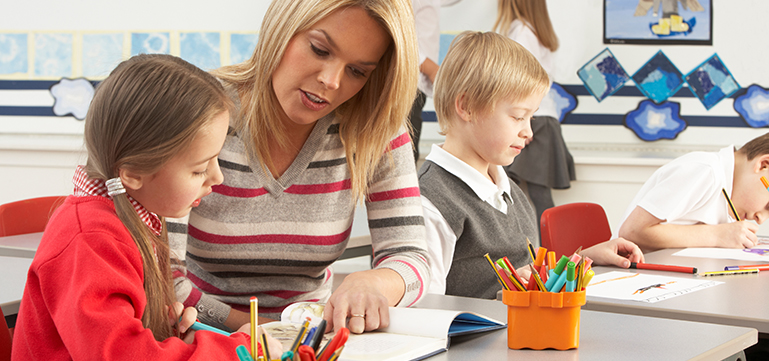Developing oracy through self-assessment and new teaching strategies

Quick links:
Information about the school
Ysgol Gymraeg y Fenni is situated in the town of Abergavenny in Monmouthshire. The catchment area serves the town and the nearby villages.
There are 252 pupils between 3 and 11 years old on roll, which include 30 part-time nursery age children. They are divided into nine classes, which include three mixed-age classes.
Eleven per cent (11%) of pupils are eligible for free school meals, and 18% of pupils have additional learning needs. Very few pupils come from Welsh-speaking homes or are from ethnic minority backgrounds.
Context and background to sector-leading practice
‘Learning as a family, growing as a community’ is the school’s mission statement. This is at the heart of all of its activity. Most pupils come to the school from non-Welsh speaking families and live in communities in which the Welsh language is not a natural part of the community life. The school encourages its pupils to appreciate their Welsh heritage, enjoy Welsh culture and take pride in using the Welsh language confidently.
Over the last few years, the school has performed strongly overall in the areas of reading and writing, but not as well in spoken language. Teachers’ end of year assessments across the school last year confirmed this. It was important to ask why pupils were not attaining higher levels in oracy. The school felt that perhaps it needed to re-visit assessment procedures, teaching strategies and the opportunities that are provided to pupils within the curriculum.
A description of the nature of the strategy or activity
The school was already aware of the importance of assessment. As a result, a series of self-assessment leaflets were developed for pupils in the Foundation Phase and key stage 2 to ensure that they develop a good understanding of standards and expectations in oracy. After introducing the leaflets in September 2016, they are now a core part of the school’s work, and pupils use them confidently to identify their own strengths and those of their peers when assessing the standard of their oral work. This provides an easy way to gather evidence of oral tasks in pupils’ portfolios. In addition, oral evidence files were introduced in order to record pupils’ individual development, and also to increase teachers’ confidence when assessing their oral tasks.
The school has introduced a successful strategy to raise oral standards across the school by using physical gestures to reinforce language patterns and phrases. The gestures act as an ‘aide memoire’ to remind pupils of powerful phrases and vocabulary to use during public oral presentations. By using actions to accompany the pattern drilling activity, pupils’ use and grasp of these phrases are more secure. The effect of this work can be seen when listening to pupils discussing maturely within a group, and when giving skilful presentations in front of different audiences. The next step for the school is to create a record of the gestures in order to use them alongside new actions next year, to ensure that pupils develop as effective and confident communicators. The practice is similar to oral ‘makaton’ for the Welsh language.
In addition, the school’s long-term plans in language and literacy across the areas of learning and curriculum subjects have been developed to map robust opportunities and stimulating contexts to develop pupils’ oral skills. Commercial programmes are used confidently by teachers and pupils to evidence these activities.
What effect has this work had on provision and learners’ standards?
Since 2013, pupils’ oral standards have increased gradually, and most pupils’ oral skills at the end of key stage 2 are now robustly strong.
In the Foundation Phase, at the higher than expected outcomes, over a period of four years in comparison with similar schools, the school has risen from the bottom 25% in all areas to the top 25% in their Welsh literacy and communication skills.
In key stage 2, at the higher than expected levels in Welsh, over a period of four years in comparison with similar schools, the school has risen from the lower 50% to the top 25% in all indicators.
Most pupils’ ability to communicate confidently in Welsh, from a low starting point, is one of the school’s strengths. Most pupils across the school use rich and correct vocabulary and phrases.
How have you shared your good practice?
This practice, the procedures and strategies have been shared with a number of local and cluster schools by inviting them to observe and providing appropriate training for co-ordinators.
The school leads a professional learning community on developing oracy.